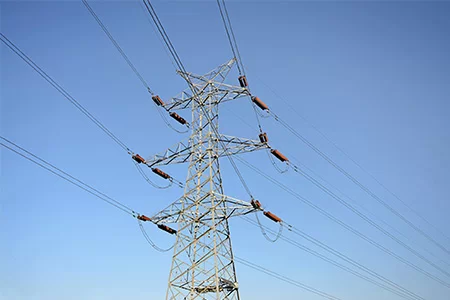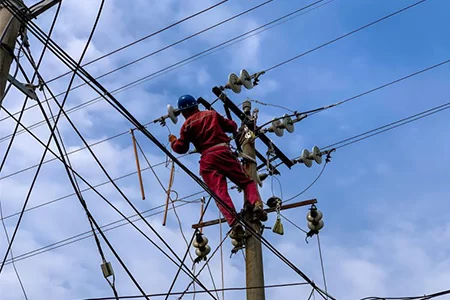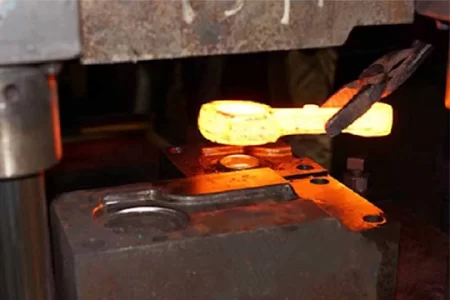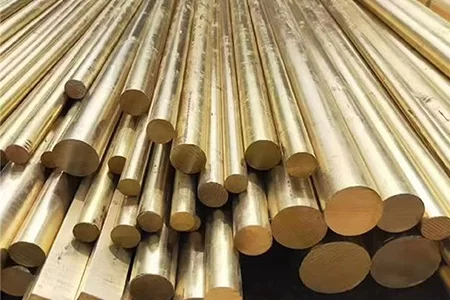By sharing knowledge, experience and views in the field of forging technology, we help you understand, learn and apply relevant technologies.

Hulk Metal Forging Technology
Share technical experience
-
Home>
-
Blog>
-
Technology>
Detailed explanation of the hot forging process: basic knowledge, process, and technical advantages

Hot forging is an important metal-forming process that changes the shape and properties of metal materials through high temperature and pressure. It is widely used in machinery manufacturing, automotive industry, aerospace and energy equipment. This article will comprehensively interpret the core content of hot forging technology from the perspectives of basic knowledge, process flow, technical advantages and its comparison with cold forging, and explore its important position in the industry.
What is hot forging?
Hot forging is heating the metal above the recrystallization temperature (usually around 1000°C) to make it in a plastic state, and then processing it through equipment such as hammering or presses to obtain the desired shape and properties. Commonly used materials include carbon steel, alloy steel, stainless steel, etc. Through this process, the internal structure of the metal is improved, casting defects are eliminated, and mechanical properties are improved.
Hot forging process flow
Hot forging is a complex production process, and each step is crucial to the quality of the finished product. The following is a typical process of closed die forging process:
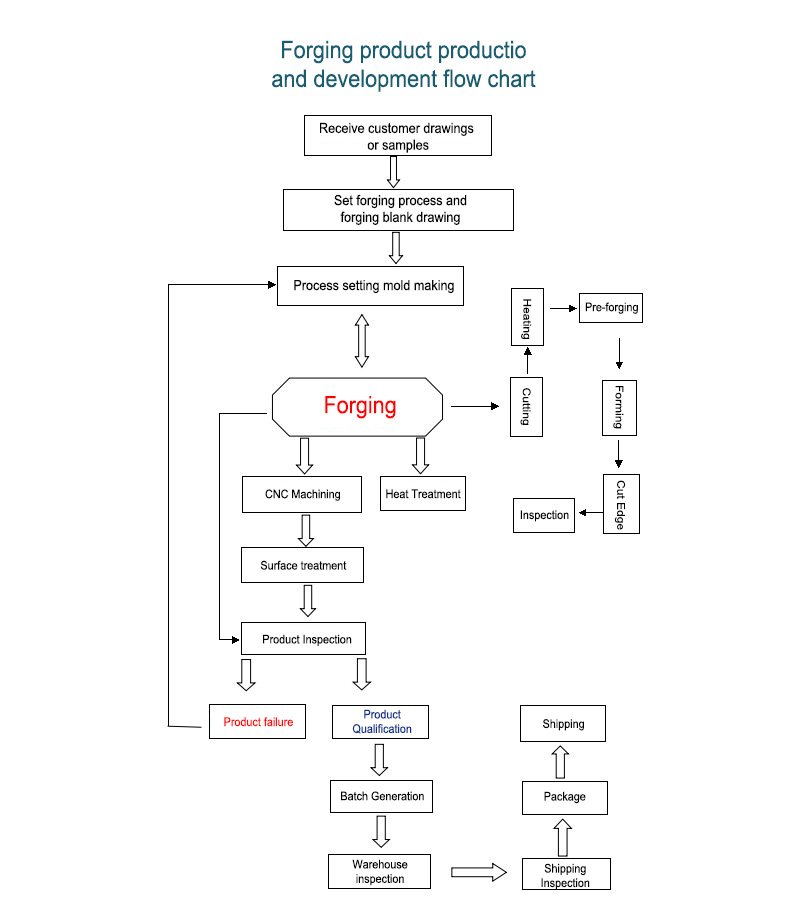
Step 1: Die design and production
The design and manufacture of the die is the first link in closed die forging and the basis for ensuring the quality of steel forgings. After receiving a new order, engineers will design the die according to the steel forging drawings provided by the customer. The types of dies required for closed die forging include forging dies, trimming dies and flattening dies, which makes the cost of forging dies much higher than casting dies.
Step 2: Cutting and heating of steel billets
We stock a variety of commonly used steels to ensure continuous production. Once the die is completed, the steel billets are taken out from the material warehouse and cut to the specified length, and then heated by the medium frequency furnace to prepare for forging.
Step 3: Closed die forging
The heated steel bar is placed between the upper and lower dies and formed into a predetermined shape by pressure. During this process, excess material, i.e. flash, is generated around the die.
Step 4: Trimming
After the forging is initially formed, it is further pressed by the trimming die to remove the flash, thereby completing the initial processing of the forging billet.
Step 5: Heat treatment
In order to improve the strength and mechanical properties of the forging, heat treatment is required according to specific requirements. Common processes include normalizing, quenching, annealing, tempering hardening and solution treatment, etc., and whether this step is performed depends on the purpose of the forging.
Step 6: Shot Peening
Shot peening is used to remove scale and improve the surface finish, making the forgings more textured and visually appealing.
Step 7: Machining
Although the tolerances of forgings are tighter than castings, machining is still required in some cases. We have CNC lathes and CNC machining equipment for simple and high-precision machining to meet different tolerance requirements.
Step 8: Surface Treatment
Usually, water-based or oil-based anti-rust paint is sufficient. However, for some specific applications, additional treatments such as color coating, galvanizing, or electroplating may be required.
Step 9: Quality Inspection
The inspection is divided into two parts: external and internal. External inspection includes dimensional testing and visual defect inspection, while internal inspection conducts detailed analysis of mechanical properties and material quality.
Step 10: Packaging and Shipping
After the inspection, we pack the products in plastic bags to protect them from damage and put them into standard wooden boxes. Customized packaging solutions can be provided according to customer needs. The geographical advantage of being located at Qingdao Port enables us to efficiently arrange sea or air transport services and quickly deliver products to the destination.
The above processes strictly follow quality standards to ensure that each hot forging can meet the high quality requirements of customers.
Technical advantages of hot forging
Features
High plasticity:
The plasticity of metal is improved at high temperatures, and it is easy to process complex shapes.
Optimized strength and toughness:
By controlling the temperature and deformation, the grain structure of the metal is improved.
High efficiency:
suitable for mass production, especially the manufacture of large and complex parts.
Advantages
Improved material properties
When processed at high temperature, the recrystallization of the metal eliminates stress and defects, and obtains a more uniform grain structure, thereby improving the strength and toughness of the product.
Shape flexibility
Hot forging is suitable for manufacturing parts with complex shapes, such as gears, crankshafts, connecting rods, etc. Its high dimensional accuracy can significantly reduce the amount of subsequent processing.
High production efficiency
Hot forging can quickly mass-produce large and medium-sized parts while reducing material waste and reducing production costs.
Multi-material applicability
Hot forging is suitable for processing a variety of metal materials, especially for high-temperature resistant and high-strength materials.
The difference between hot forging and cold forging
Hot forging and cold forging are two completely different metal forming technologies, each with its own application scenarios and advantages.
Processing temperature
· Hot forging: carried out at high temperatures, suitable for processing large deformation and complex shapes.
· Cold forging: carried out at room temperature, suitable for processing small deformation and high precision requirements.
Material properties
· Hot forging: improves the plasticity and toughness of the material, but is prone to oxide scale and surface roughness.
· Cold forging: maintains the hardness and surface finish of the material, but has higher requirements for processing equipment.
Application areas
· Hot forging: suitable for large parts in heavy machinery, aerospace, and other fields.
· Cold forging: suitable for small high-precision parts in electronics, home appliances, and other fields.
Advantages of HULK Metal
As a professional Chinese forging manufacturer, HULK Metal is committed to providing high-quality hot forging solutions to customers around the world. Its advantages include:
Advanced production equipment
HULK Metal has world-leading forging equipment and automated production lines, which can efficiently produce high-quality parts.
Professional technical team
The experienced team of engineers provides technical support from material selection to process design to ensure that each product meets customer needs.
Strict quality control
The factory is ISO 9001 certified and has a dedicated quality inspection team and advanced testing equipment to ensure that the products meet international standards.
Diversified services
From design, production to logistics and distribution, HULK Metal provides one-stop services to meet customers' all-round needs.
Flexible customization capabilities
Whether it is small-batch customization or large-scale production, HULK Metal can provide flexible solutions and create excellent value at preferential prices.
Provide competitive prices
We have established long-term cooperative relationships with high-quality raw material suppliers. The hourly wage of Chinese workers is around US$3, while the hourly wage of workers in many other countries is US$23, and our labor costs are more competitive. This combined advantage enables us to provide customers with cost-effective products at more attractive prices while ensuring that the quality always meets international standards.
Hot forging technology plays an indispensable role in modern manufacturing due to its efficiency and adaptability. By choosing HULK Metal, you will have excellent product quality and worry-free service experience, and jointly forge the road to success.
Article Navigation
Article Navigation
Industries
Foundries
-

September.12, 2024
Do you know the comprehensive analysis of wire grip puller?
READ MORE
-

September.06, 2024
Why can wire rope grip clamp cables?
READ MORE
-

September.02, 2024
Things to note when purchasing a jaw wire grip
READ MORE
-

November.29, 2024
What is steel forging?
READ MORE
-

November.08, 2024
How to produce high-quality wire pulling grips?
READ MORE
-

July.30, 2024
What are the materials for hot forging?
READ MORE



